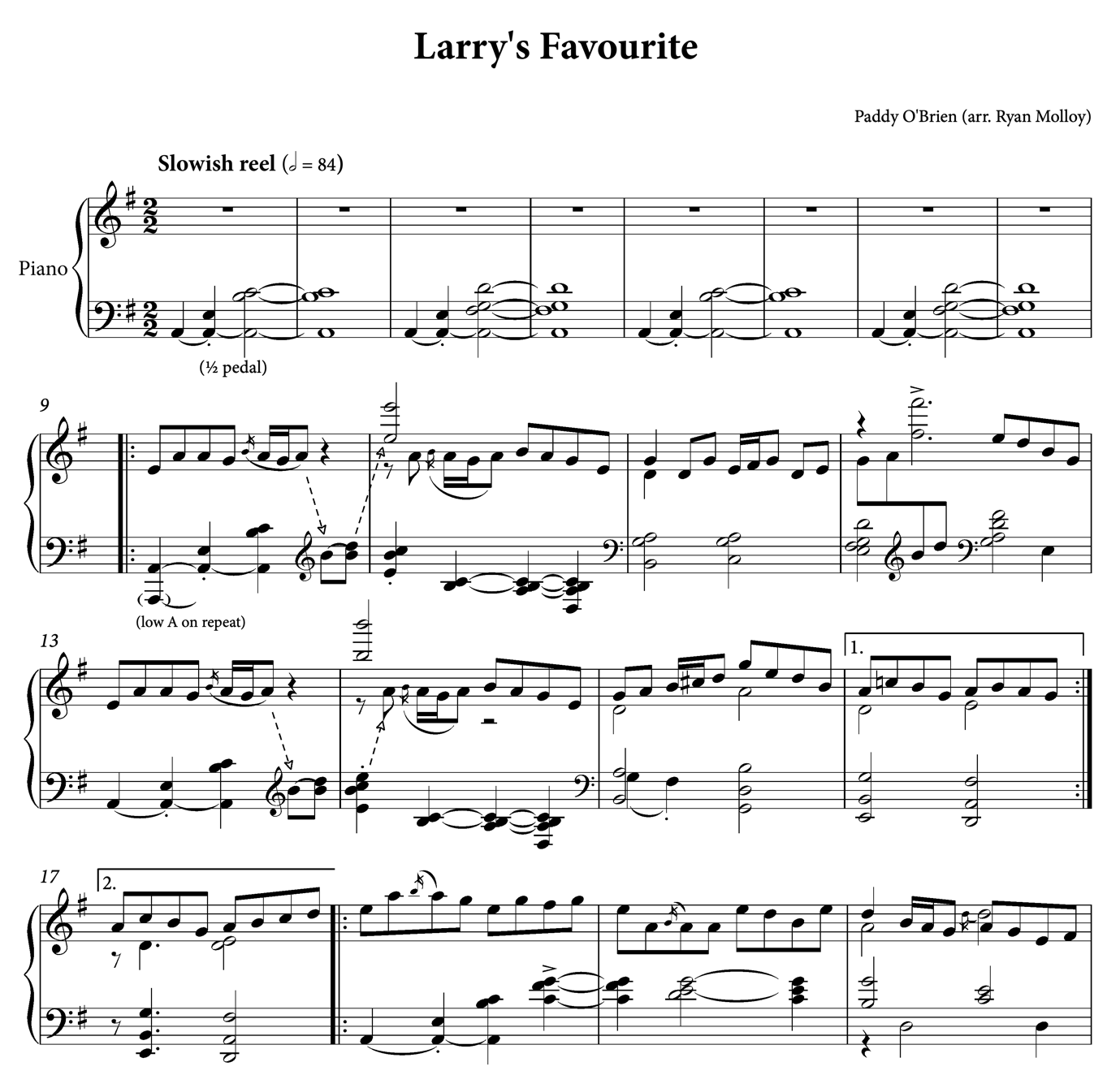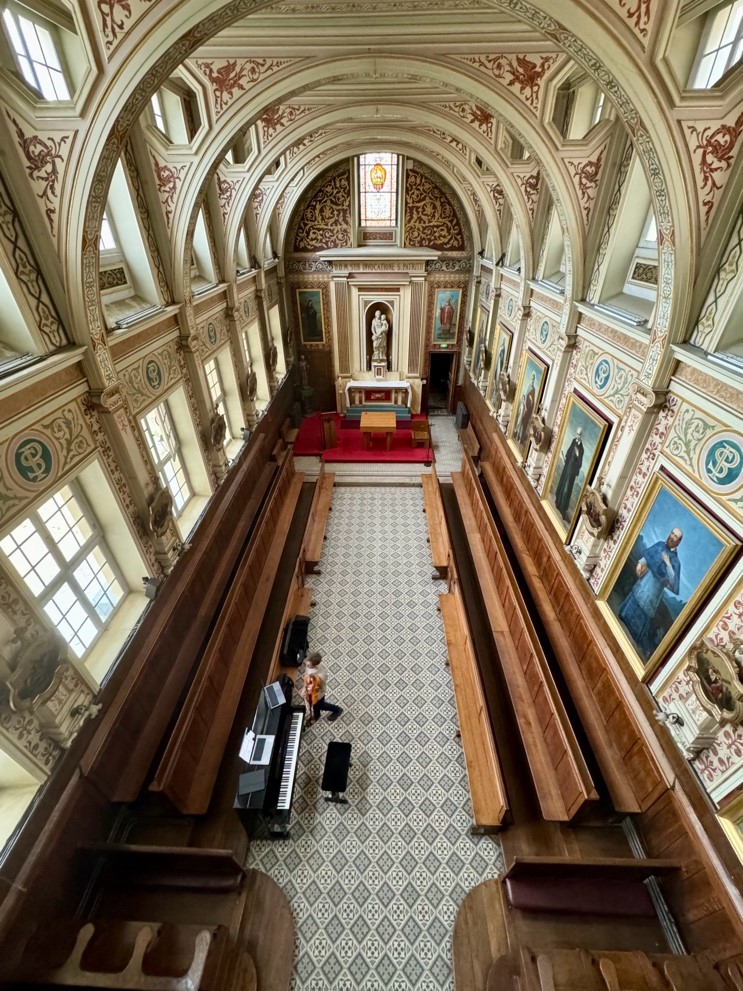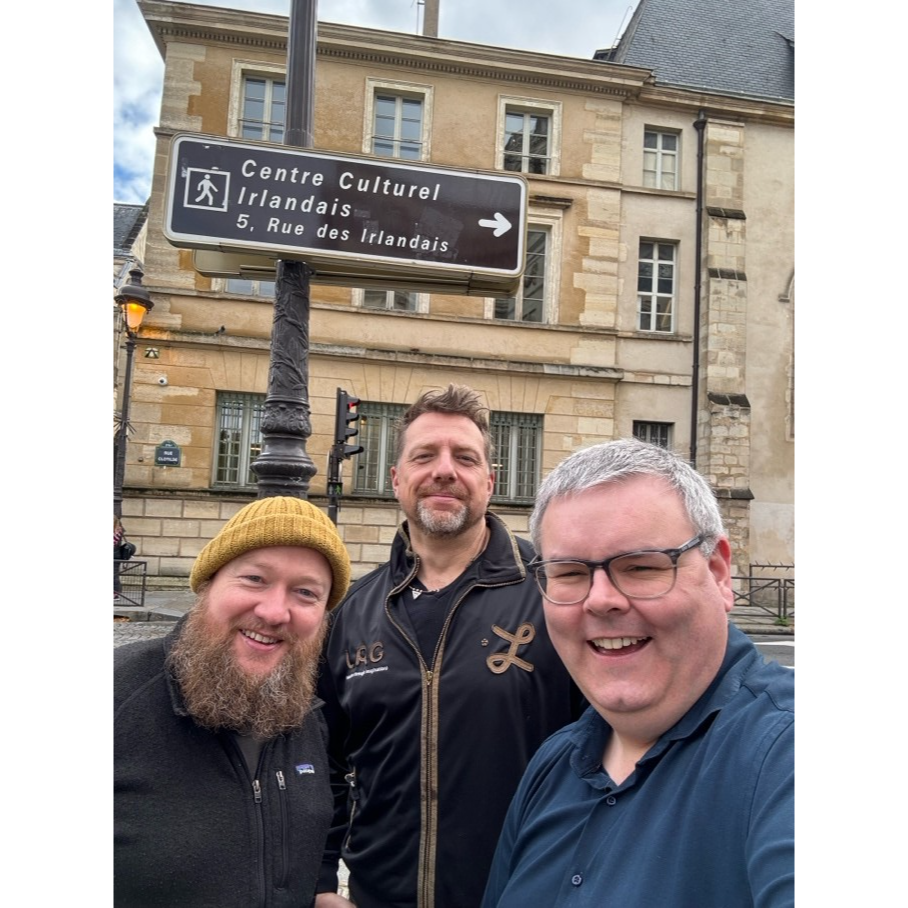



The Irish Traditional Music Archive (ITMA) is committed to providing free, universal access to the rich cultural tradition of Irish music, song and dance. If you’re able, we’d love for you to consider a donation. Any level of support will help us preserve and grow this tradition for future generations.
By Ryan Molloy
I was delighted to be selected as ITMA’s resident at the Centre Culturel Irlandais (CCI) in Paris for one month in Autumn 2024, to coincide with a period of sabbatical leave from my day job in the Department of Music at Maynooth University. My goal for the residency was essentially to have a dedicated space—a temporal, mental and physical one—to focus on my performance practice at the piano with a view to working up new material for Pianophony Vol. 2, the sequel to my first solo piano album released back in 2019.
Truth be told, I have a problematic relationship with the piano. My traditional piano-playing, in particular my right-hand, has always felt like a poor relative of my fiddle-playing (my first instrument in traditional music), while my left-hand has always tried to do what my two-handed accompaniments do, with half the fingers. So far, so fail. For me, this is intrinsically linked to the composer psyche, where there is a sound in my head that I can’t recreate on my own, so one resorts to writing it out and having other people scratch that musical itch. I have never had any real time to practice my trad piano chops before (or at least not since I practiced for the Fleadhs way back in the 20th Century…) and, with a lot of my recent creative focus being on composition, I decided to put this ‘written out’ side of me to good use in improving my piano-playing as part of this ITMA residency at the CCI.
My plan was twofold: 1) improve my overall technique and stamina, and 2) work up interim arrangements of sets of tunes that I could use as a springboard to try more advanced ideas and hopefully push my playing into musical spaces that weren’t immediately accessible to me. The first of these was achieved (partly) with some mind-numbing technical exercises. I went back to my piano lessons of old and dragged out Hanon’s The Virtuoso Pianist (the word Hanon alone can be enough to give some pianists cold sweats…!). This pianistic gymnasium did have a positive effect on my stamina and I found myself able to play melody for longer and developed a more mobile left-hand to tackle more complex accompanimental figures. Of course, now back in Ireland, I have to try to continue the practice routine to maintain this dexterity. Easier said than done (and with much fewer croissants…)!
I wanted the new album to be a mix of traditional and newly composed tunes and I was keen to go back to tunes that were important in my early piano-playing days. One of these is the great reel Larry’s Favourite by Paddy O’Brien. My goal here was to play it a little slower than I usually do and to try to expand the accompaniment such that it creates two layers, one above the melody and one below, using the classical idea of inverted pedals (essentially long, held high notes). This involves having the left hand take the tune for brief snippets while the right hand can play these high notes. Once I had the basic idea, I notated it:

…and then, with practice, was able to develop the upper layer by using different notes and rhythmic placements. Here is a very rough and ready snippet of this in action:
This is the same kind of process that I took with six sets in total that I was able to work up during my time at the CCI. The secondary goal with this arrange-notate-develop approach is to have a set of scores that I can make available to other pianists who are keen to develop their own playing. I have received many such requests for tracks from Pianophony (Vol. 1) but don’t have such scores, or the patience to start transcribing them! Therefore, as well as being creative and developmental tools for me personally, these scores have the possibility of being didactic materials for other performers.

One of the other wonderful aspects about working in the CCI was the sense of living and working amongst a community of artists, and more widely in the vibrant traditional Irish music scene in Paris. There were plenty of local sessions (see video) and I was delighted to have a regular practice partner in the form of fellow-resident Sebastian Hensel, a marvellous violist from Leipzig. Furthermore, the CCI invited me to host a concert during my residency, and on the 10th October performed to a packed chapel with my good friend and fiddler extraordinaire Fergal Scahill. The Director of the CCI, Nora Hickey M’Sichili, suggested that it would be interesting to develop a Breton connection as part of this concert and, as such, I was delighted to have the chance to invite the phenomenal Breton flautist Sylvain Barou to be part of the event. We exchanged Irish and Breton tunes (including some of Sylvain’s own compositions) and, to top off the international exchange, ate some excellent Lebanese food!

I am so grateful to the Irish Traditional Music Archive and the Centre Culturel Irlandais for the opportunity to spend time in Paris and to develop my practice in this way. Lastly, I owe a debt of gratitude to the horrible weather in Paris during the entire month! It made me feel right at home and prevented me from exploring too many fine boulangeries and restaurants, keeping my nose to the grind at the piano.